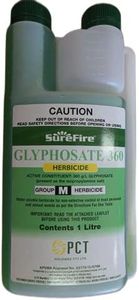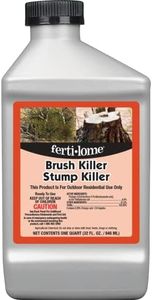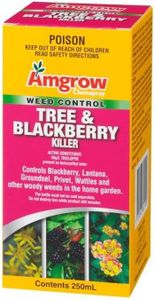We Use CookiesWe use cookies to enhance the security, performance,
functionality and for analytical and promotional activities. By continuing to browse this site you
are agreeing to our privacy policy
5 Best Stump Killers
From leading brands and best sellers available on the web.By clicking on a link to a third party's website, log data is shared with that third party.
Buying Guide for the Best Stump Killers
When you're looking to get rid of tree stumps, stump-killers can make the job much easier compared to mechanical removal. Choosing the right product depends on your particular needs, the size of the stump, and the environment where it's located. It’s important to understand the active ingredients, application methods, safety considerations, and how quickly you need results. By focusing on these features, you’ll be able to select a stump-killer that’s both effective and suitable for your situation.Active IngredientThe active ingredient is the main chemical that works to break down or kill the stump. Common ingredients include potassium nitrate, glyphosate, or triclopyr. Potassium nitrate mostly helps decay the wood, making it easier to remove, while glyphosate and triclopyr are herbicides that stop regrowth. If you want to accelerate decomposition, potassium nitrate is usually preferred. To prevent regrowth or kill the stump, look for herbicide-based products. Choose based on whether you want to remove the stump completely or just stop shoots from sprouting.
Application MethodStump-killers come in various forms, such as granules, liquids, or powders, and each is used a bit differently. Granules and powders are often poured into drilled holes in the stump, while liquids may be painted or sprayed on fresh cuts or exposed surfaces. Granular and powder forms require less handling of chemicals, while liquids may be more precise for targeting sprouts. How comfortable you are with handling chemicals and what tools you have will help you select the right method.
Time to ResultsSome stump-killers work quickly, stopping regrowth in a few weeks, while others are designed to rot the wood over months. Quick results usually mean the product is a potent herbicide; longer breakdown times are typical for products that facilitate natural decay. If you need the stump gone soon for landscaping or safety, consider one with a faster action. If time is less important and you prefer a less aggressive approach, slower-acting options may be sufficient.
Environmental ImpactStump-killers can have varying effects on other plants, soil, and water nearby. Some formulas are more environmentally friendly, breaking down easily or targeting only certain plants, while broad-spectrum chemicals may affect more of the ecosystem. If you have gardens, children, or pets nearby, look for products marked as low-toxicity or suitable for residential use. Understanding where you plan to use the product will help you minimize harm to the surroundings.
Ease of Use & SafetySafety features include how much protective gear you need, how strong the smell is, and how tricky it is to handle. Products with clear instructions and minimal chemical exposure tend to be easier and safer for casual users. If you’re not experienced with chemicals, opt for stump-killers that require less mixing or direct handling. Always consider your comfort with reading safety labels and following directions, as this will make your experience safer and more successful.





